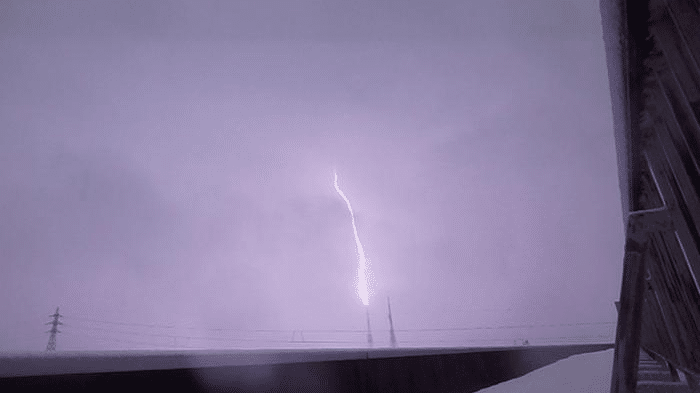New World Record: Weather Satellite Captures 515-Mile Lightning Flash

Back in 2017, a remarkable thunderstorm produced an extraordinary lightning bolt that stretched an astonishing 515 miles (829 kilometers) across the sky. Recent research utilizing archival satellite data has confirmed this record-breaking length, which extends from Texas to Missouri. This megaflash lightning has officially surpassed the previous record of 477 miles set in 2020, marking a significant milestone in meteorological studies.
Understanding Megaflash Lightning
Megaflash lightning is characterized by its exceptional length, capable of reaching up to 62 miles, while the average lightning bolt measures less than 10 miles. To uncover the reasons behind this phenomenon, researchers analyzed data from the National Oceanic and Atmospheric Administration’s GOES-16 satellite. Equipped with a lightning mapper, this satellite monitors over one million lightning strikes daily. The analysis confirmed that the record-setting bolt indeed measured 515 miles, showcasing the power and complexity of such extreme weather events.
Advancements in Measurement Techniques
The evolution of satellite technology has significantly enhanced the accuracy of lightning measurements. Previously, ground-based radio networks were the primary tools for tracking lightning activity. According to Michael Peterson from the Georgia Tech Research Institute, the introduction of continuous measurements from geostationary satellites represents a major advancement in this field. Today, most global megaflash hotspots are monitored by these satellites, and improved data processing techniques allow for a better representation of lightning flashes across various observational scales.
Megaflash lightning events are rare, occurring in less than one percent of thunderstorms. These extraordinary flashes typically result from prolonged storm activity, often lasting 14 hours or more. The conditions necessary for such phenomena are not as uncommon as one might think, suggesting that future observations may reveal even longer megaflashes.
Future of Lightning Research
As researchers continue to gather data from lightning mapping satellites, the potential for discovering new megaflashes remains high. Randy Cerveny, a professor at Arizona State University involved in the study, noted that the ongoing collection of data could lead to the identification of even longer lightning bolts in the future. With advancements in technology and data analysis, the scientific community is poised to deepen its understanding of these spectacular natural occurrences, paving the way for new insights into the mechanics of lightning and its behavior during severe weather events.
Observer Voice is the one stop site for National, International news, Sports, Editor’s Choice, Art/culture contents, Quotes and much more. We also cover historical contents. Historical contents includes World History, Indian History, and what happened today. The website also covers Entertainment across the India and World.
Follow Us on Twitter, Instagram, Facebook, & LinkedIn

